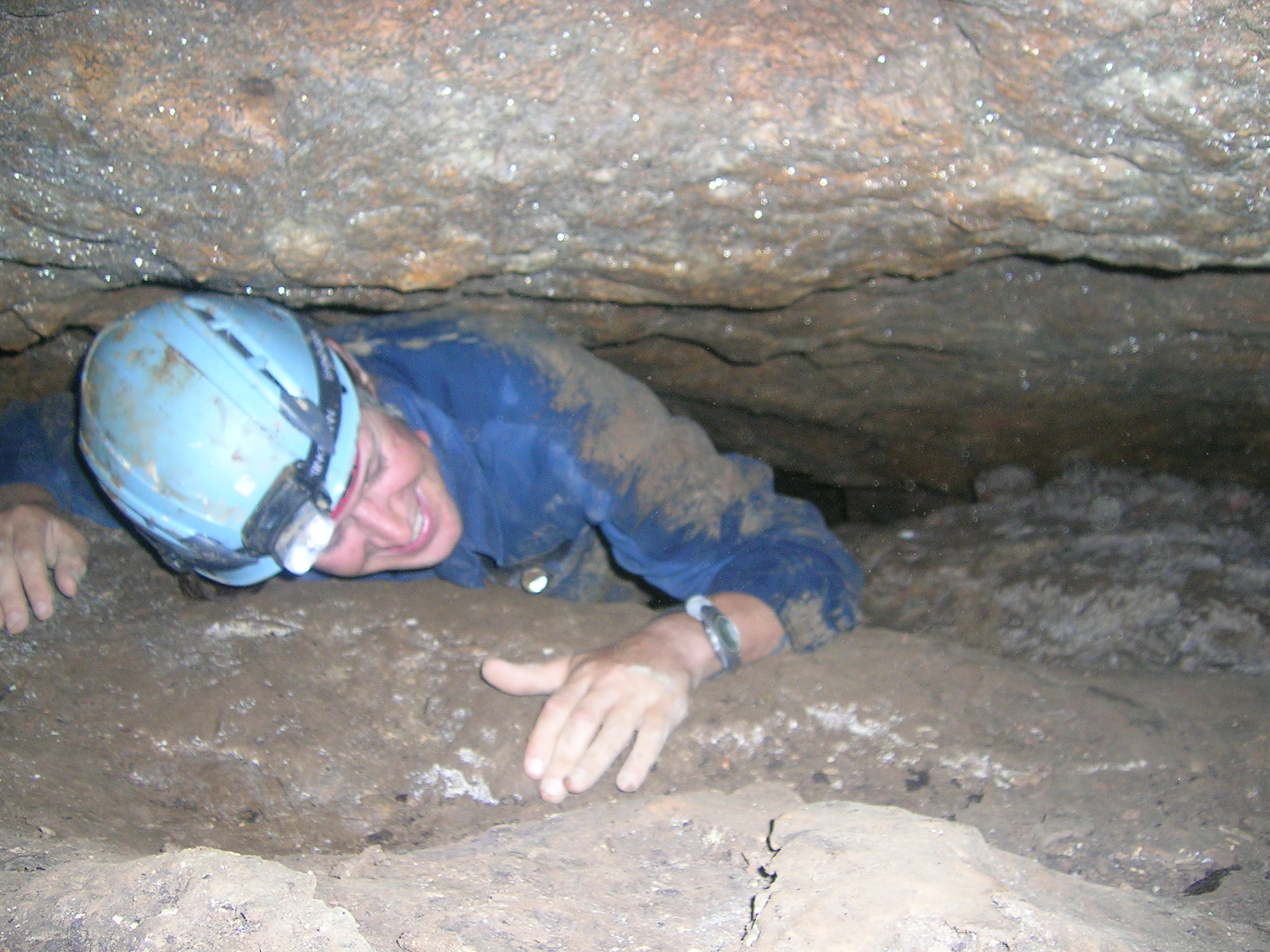Researchers Study Cave’s 'Breathing’ for Better Climate Clues

Erik Pollock of the University of Arkansas Stable Isotope Laboratory climbs into tight spaces to study carbon dioxide cycling in caves. Seasonal differences can provide clues to paleoclimate proxies.
FAYETTEVILLE, Ark. – A University of Arkansas researcher studying the way caves “breathe” is providing new insights into the process by which scientists study paleoclimates.
Katherine Knierim, a graduate student at the University of Arkansas, together with Phil Hays of the geosciences department and the U.S. Geological Survey and Erik Pollock of the University of Arkansas Stable Isotope Laboratory, are conducting close examinations of carbon cycling in an Ozark cave. Caves “breathe” in the sense that air flows in and out as air pressure changes.
|
University of Arkansas researchers are studying carbon isotopes found in the cave's atmosphere and in water that flows through the cave. |
The movement of carbon in cave systems is controlled by the concentration of carbon dioxide. When conditions are right, this carbon can be deposited as layers in stalagmites, stalactites and soda straws. These layers resemble the rings found in trees, except that they can date back millions of years, hold information about cave conditions.
“People have been using these formations as paleoclimate records,” Hays said. However, researchers make an assumption when they do so.
“The problem is that you have to assume you are getting even carbon and oxygen isotope exchange,” Knierim said. Isotopes, or atoms of the same type but with slightly different weights, are found in plants, animals, organic matter and rocks. Different types of material have unique “signatures,” or proportions of a particular atom at a particular atomic weight.
By looking at carbon isotope ratios in cave topsoils, the cave atmosphere and the stream within the cave, Knierim and her colleagues will be able to determine the different contributions of carbon sources to the formations. This will help scientists develop more accurate paleoclimate conditions from cave formations.
A greater knowledge of how carbon cycles through cave systems also will help scientists develop better methods for watershed management.
The researchers are in the geosciences department of the J. William Fulbright College of Arts and Sciences.
Contacts
Katherine Knierim, research associate, geosciences
J. William Fulbright College of Arts and Sciences
kknierim@uark.edu
Phil Hays, adjunct professor, geosciences
J. William Fulbright College of Arts and Sciences
479-575-7343, pdhays@uark.edu
Melissa Lutz Blouin, director of science and research communications
University Relations
479-575-5555, blouin@uark.edu
Headlines
Four Students Named Goldwater Scholars; Two Earn Udall Honorable Mentions
Four U of A students have received the prestigious Goldwater Scholarship, an award for top students in mathematics, science, and engineering.
Cross-Campus Collaboration Culminates in New Outdoor Geological Installation
Grand opening event to celebrate the new GeoLab installation at the U of A’s Gearhart Hall courtyard is set for May 3. The installation will be open to the public year-round.
First Students to Use Online Degree to Hone Nursing Leadership, Elevate Patient Care
Hanna Baxendale and Wendi Kimbrell will begin coursework in the Doctor of Nursing Practice-Executive Master of Business Administration program offered by the Eleanor Mann School of Nursing and Walton College.
Join the Office for Sustainability on a Final Cruise to Campus
Cruise to Campus Wednesdays have fostered a gathering space for individuals interested in biking to campus. Drop by the Old Main Lawn from 7:30-10 a.m. Wednesday for coffee, something to eat and conversation.
Fay Jones School Student Ambassador Program Gives Voice to Design Students
The student ambassador program at the Fay Jones School of Architecture and Design is built to connect top design students with their school, its alumni, its future students and others inside and outside the school.




